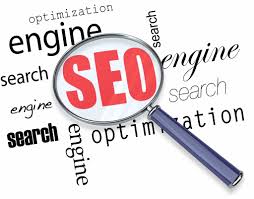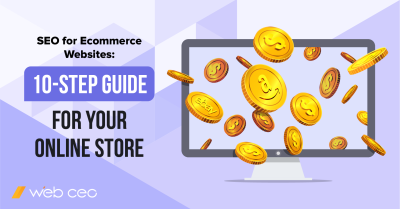
Today I am going to ruin the myth that says you need to spend tons of money to promote your business online. What you really need is trustworthy recommendations, a reliable set of SEO tools and confidence in your success.
1. Build a website with your visitors in mind.
SEO is not just about optimizing content; it begins when you first build a website. Think about your site structure carefully as it is essential both for a great user experience and for high rankings. A successful site should have:
- Logical structure with good navigation;
- Optimized internal links structure;
- A good user interface;
- Clear calls to action;
- Load quickly;
- A useful 404 page that directs users easily to where they may want to go.
Search engines try to foresee what a searcher needs so they can serve the best page. When you build a website think as your prospect customer would think and pay attention to usability issues.
What tool to use:
Use the WebCEO Internal links optimization tool to be sure your most important pages get enough authority.
2. Catch as much organic traffic as possible.
There are three main sources of organic traffic: SEO, Social Media marketing and Local Search optimization. These sources may bring tons of traffic absolutely free of charge. Develop all these three directions; they bring the most results when balanced together (as with the ingredients of a recipe provided by a famous chef).
What tool to use:
Use the Web CEO Content Submission tool. Here you will get a hand-picked list of the best local resources to submit your website to and catch all the local traffic possible.
3. Convert the organic traffic you get.
You’ve created a beautiful site with a trendy design, optimized it and gotten thousands of unique visitors, but they never come back and convert. This can be a nightmare! Conversions are what marketers exist for.
Instead of panic, revise your page copy and calls to action.
- Do visitors need what you offer?
- Is your offer clear?
- Does your site build trust?
Split tests are a marketer’s best friend. Update a page’s copy and test. Rewrite a page’s title and test. Change call to action and test, test, test. Test till you find what works the best for you.
What tool to use:
Use Google Analytics to monitor how conversions change when you change your landing pages.
4. Adopt the best marketing techniques of your competitors.
Competitive analyses give you information you can use to differentiate yourself from others in the marketplace. When you research your competitors’ marketing parameters, you will know how to fine-tune your marketing plan and get more profit.
Two main aspects to spy on:
- Your competitors’ rankings – to know how hard you need to work to outrank them.
- Their Social Media Marketing – to improve your own efforts.
Your competitors are changing all the time. That is why your competitive analysis should be an ongoing process. It’s not something that you can do once and then forget about.
What tool to use:
Use the Web CEO Competitor Metrics reports to monitor competitors’ rankings, backlinks and estimate their traffic.
5. Analyze the results you get.
Marketing without analysis is like a newbie training in a gym without a couch: you are working hard, but you do not know where to move. To fine-tune your promotion efforts for better conversions (remember that conversions are your main success criterion) you should track everything.
What tool to use:
Track your rankings to be sure your SEO efforts bring results. Use the Web CEO Rank Tracking tool to monitor your rankings across 370+ global and local search engines.
P.S. Download the Web CEO Quick Start Guide to learn how to use the Web CEO tools effectively or sign up for a 14-day Free Trial . (It’s not a free trial. It’s a free subscription for the online SEO Platform which is not limited in time. Feel free to use it as long as you wish. Really.)



